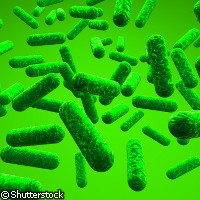How protein receptors affect plant immunity
The innate immune system is a person's, animal's or plant's first line of defence against invading organisms. Dutch researchers have discovered a protein component that regulates this system. The study also highlights changes in this regulating mechanism that can trigger disruptions in human and plant immune systems. The findings, published in the journal Science, will help raise awareness of human autoimmune disorders and also fuel the development of safer, more disease-resistant foods. According to the researchers, changes in protein receptors can cause the immune system to become weakened or overactive, leading to autoimmune disorders such as gout and Crohn's disease in humans or people, while plants try to defend themselves against imaginary pathogens. Co-authors of the study, Professor Frank Takken of the University of Amsterdam (UvA) and Dr Wladimir Tameling of the Wageningen University and Research Centre (UR) in the Netherlands, said that these multidomain protein receptors determine the difference between healthy or sick plants. The plant immune system has two layers: one is based on extracellular, trans-membrane receptors that recognise 'conserved microbe-associated' molecules and trigger a somewhat weak immune response that stops colonisation of microbes. The second breaks through the first layer to fight specialised infectious agents; this second layer is based on 'highly polymorphic' resistance (R) proteins, the authors explain. 'R proteins act mainly (but not exclusively) intracellularly and confer protection against (hemi-) biotrophic pathogens that need living host tissues for their proliferation,' the study reads. 'During infection, these pathogens (which include many viruses, bacteria, fungi, oomycetes and nematodes), produce virulence factors (effectors), of which several suppress the first layer of the plant's immune system, clearing the way for infection.' 'Some effectors, or the perturbations they cause in the plant, are perceived by R proteins, which consequently set off strong defence responses in the plant that often leads to suicide of the infected cells,' the scientists write. The researchers noted that when the multidomain proteins perceive pathogens, changes take place that are dependent on nucleotide exchange. 'Most R proteins are multidomain NB-LRRs ('nibblers'), named after their central nucleotide binding (NB) and leucine-rich repeat (LRR) domains,' the study reads. The NB domain, the authors note, is part of a larger domain called NB-ARC. The next step, the researchers believe, should be an investigation into the biochemical properties of the proteins during regulation of plant defences; the dynamics and subcellular localisation of NB-LRR signalling complexes in vivo should also be evaluated, they said. By shedding light on which partners interact with the NB domain, researchers hope to gain insight into how R proteins activate host defences. 'Another major challenge will be the elucidation of the three-dimensional structure of R proteins, preferably in the different conformational states, as this is the key for a full understanding of the molecular mechanisms underlying the choice between life and death,' the study concludes.
Countries
Netherlands



